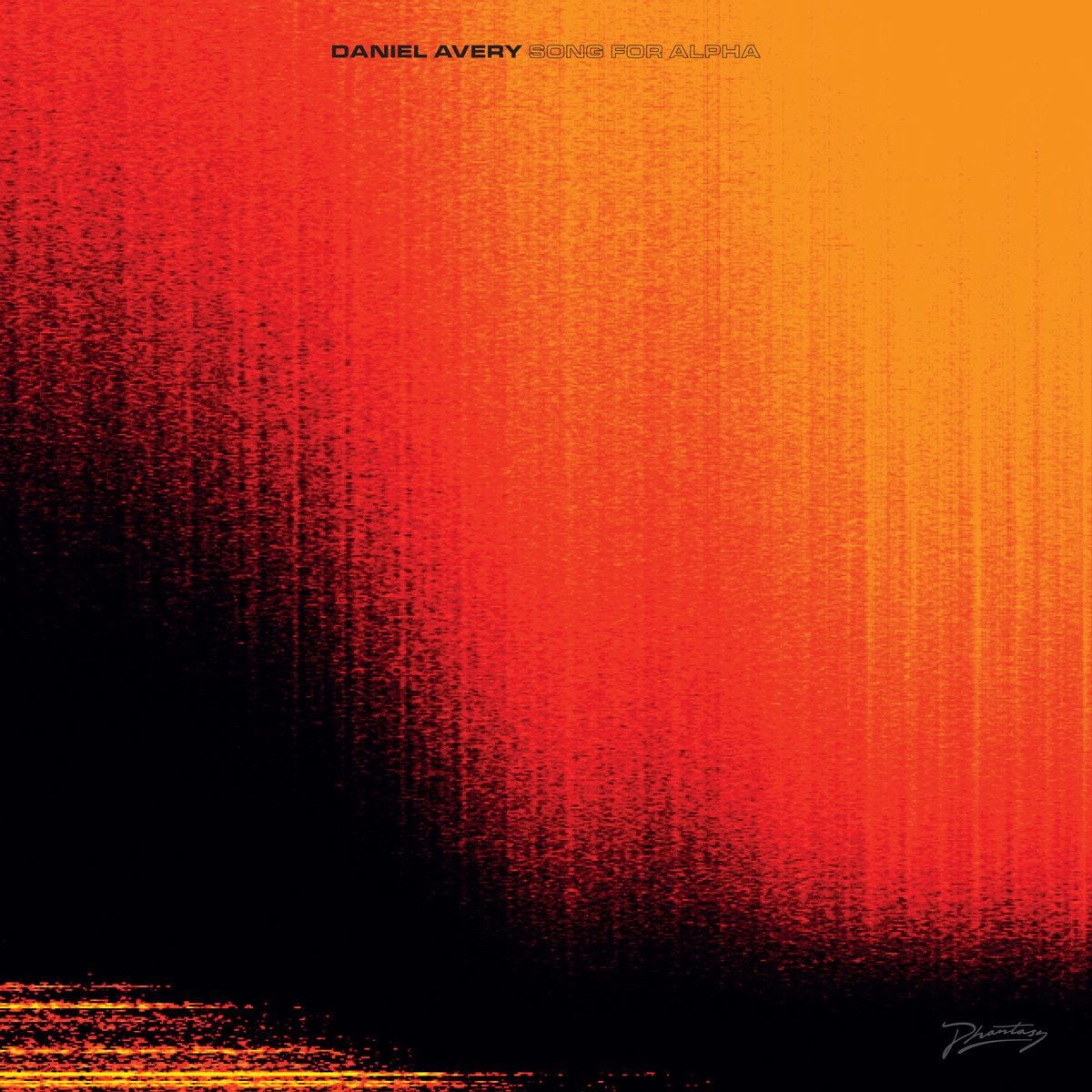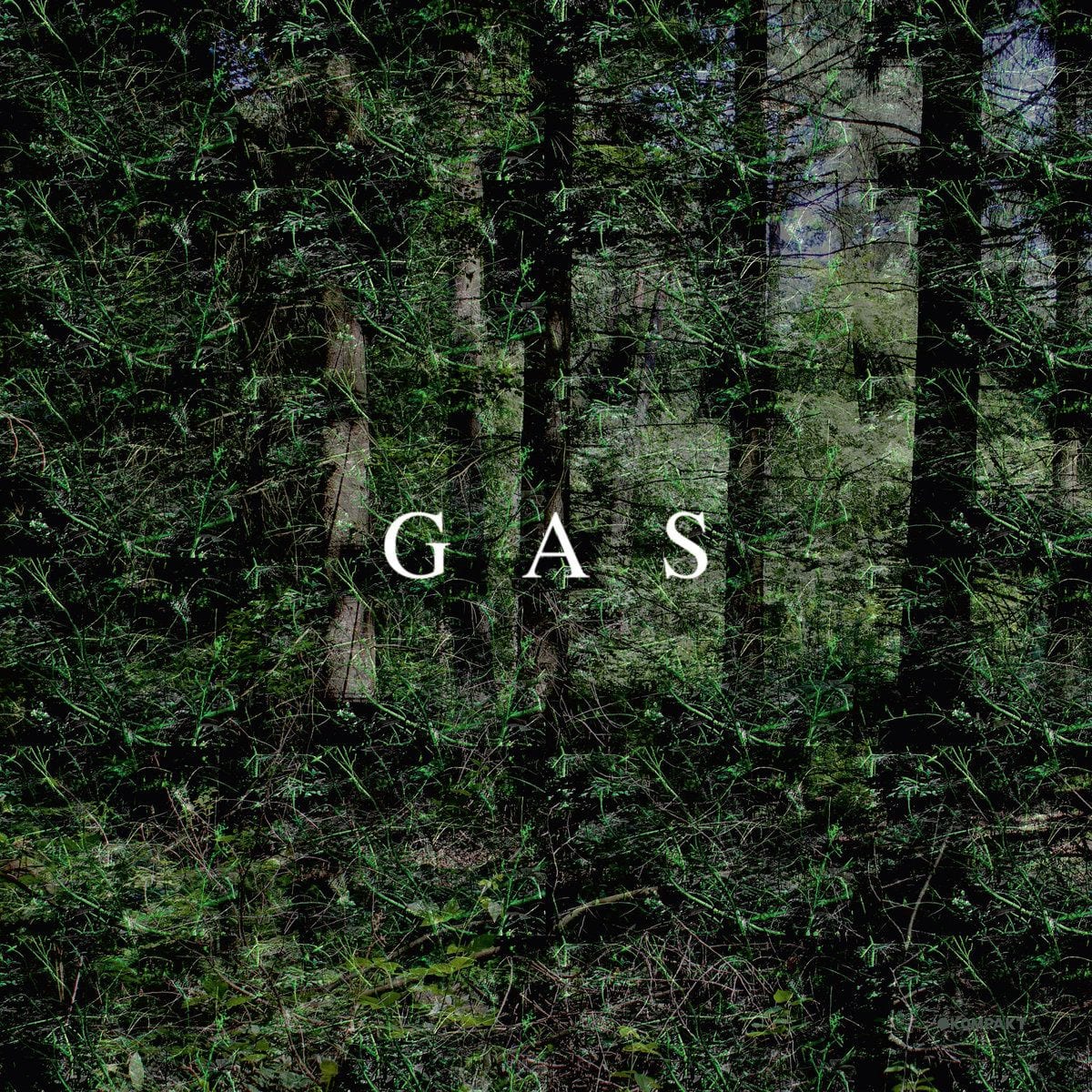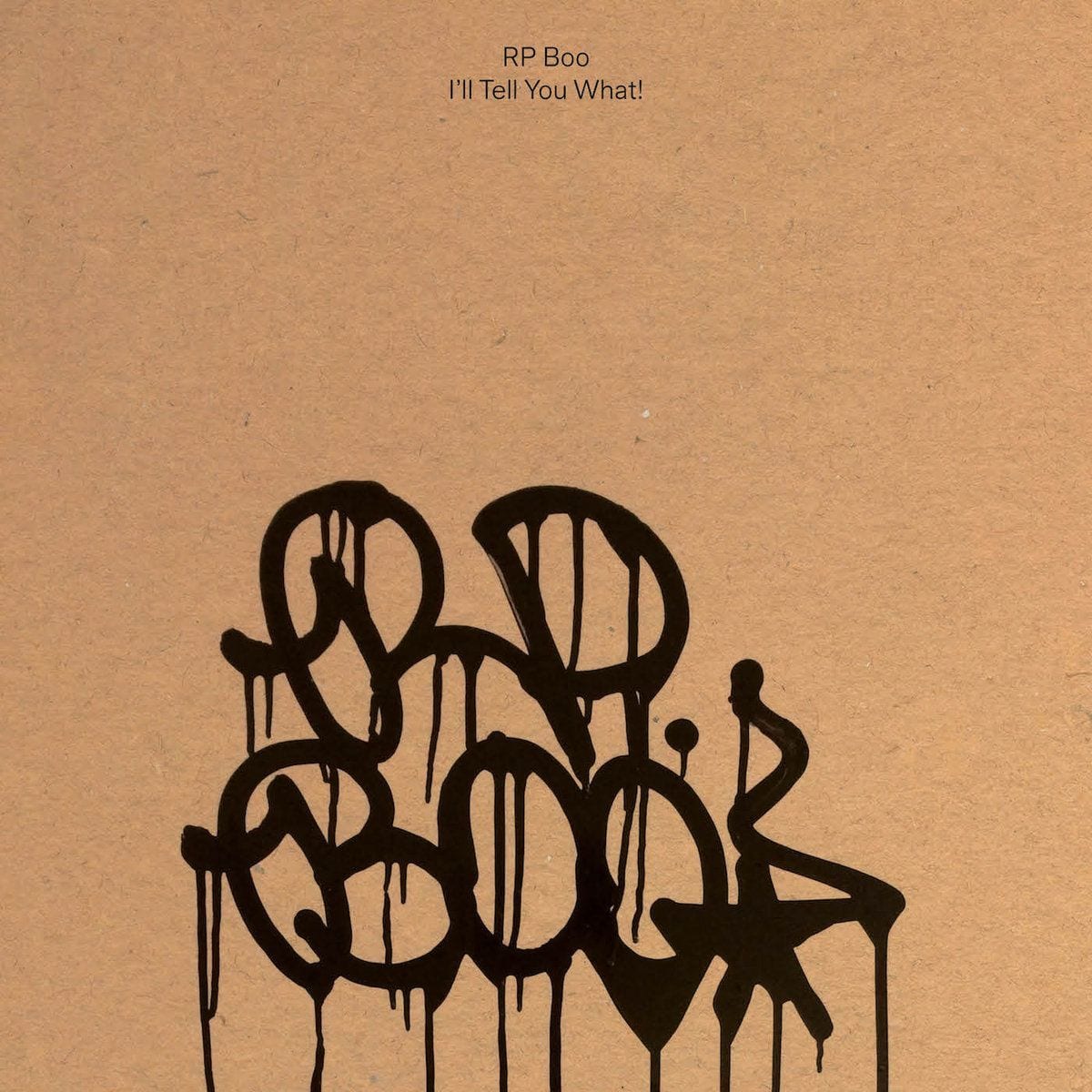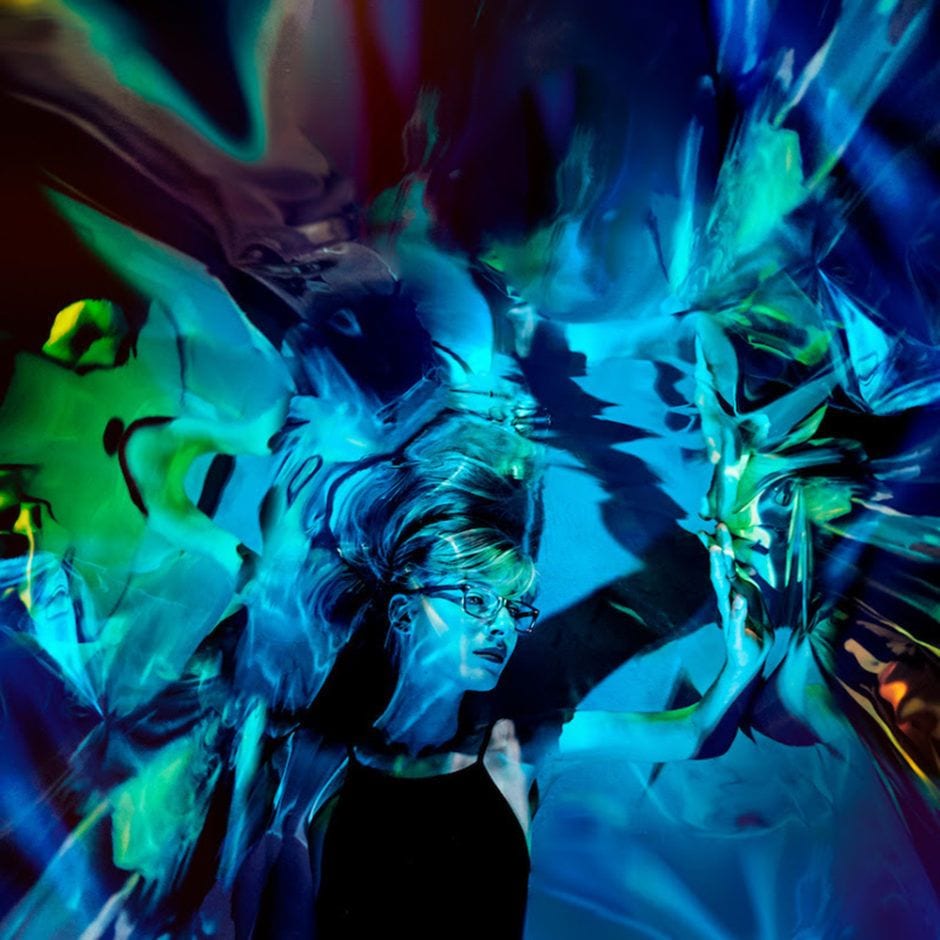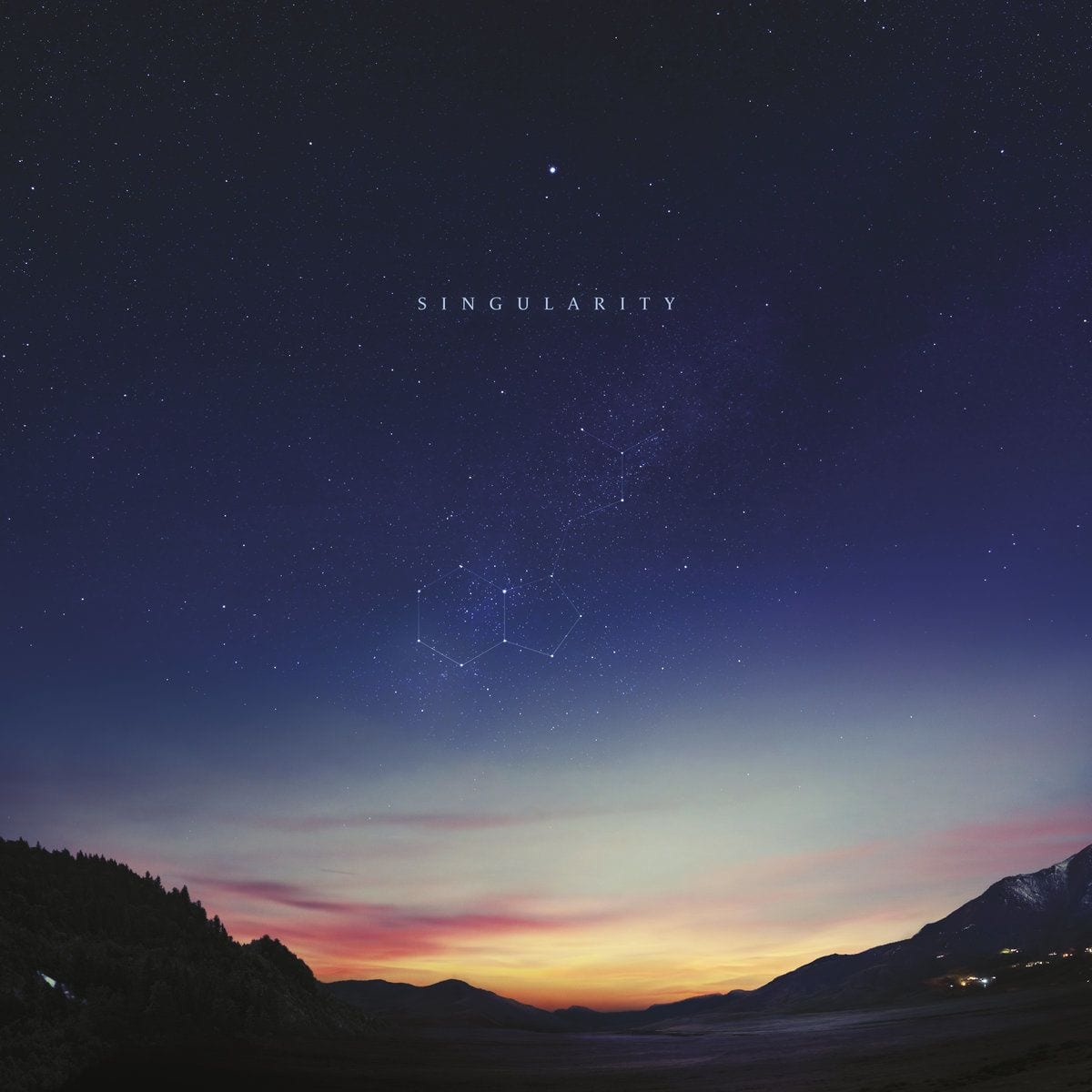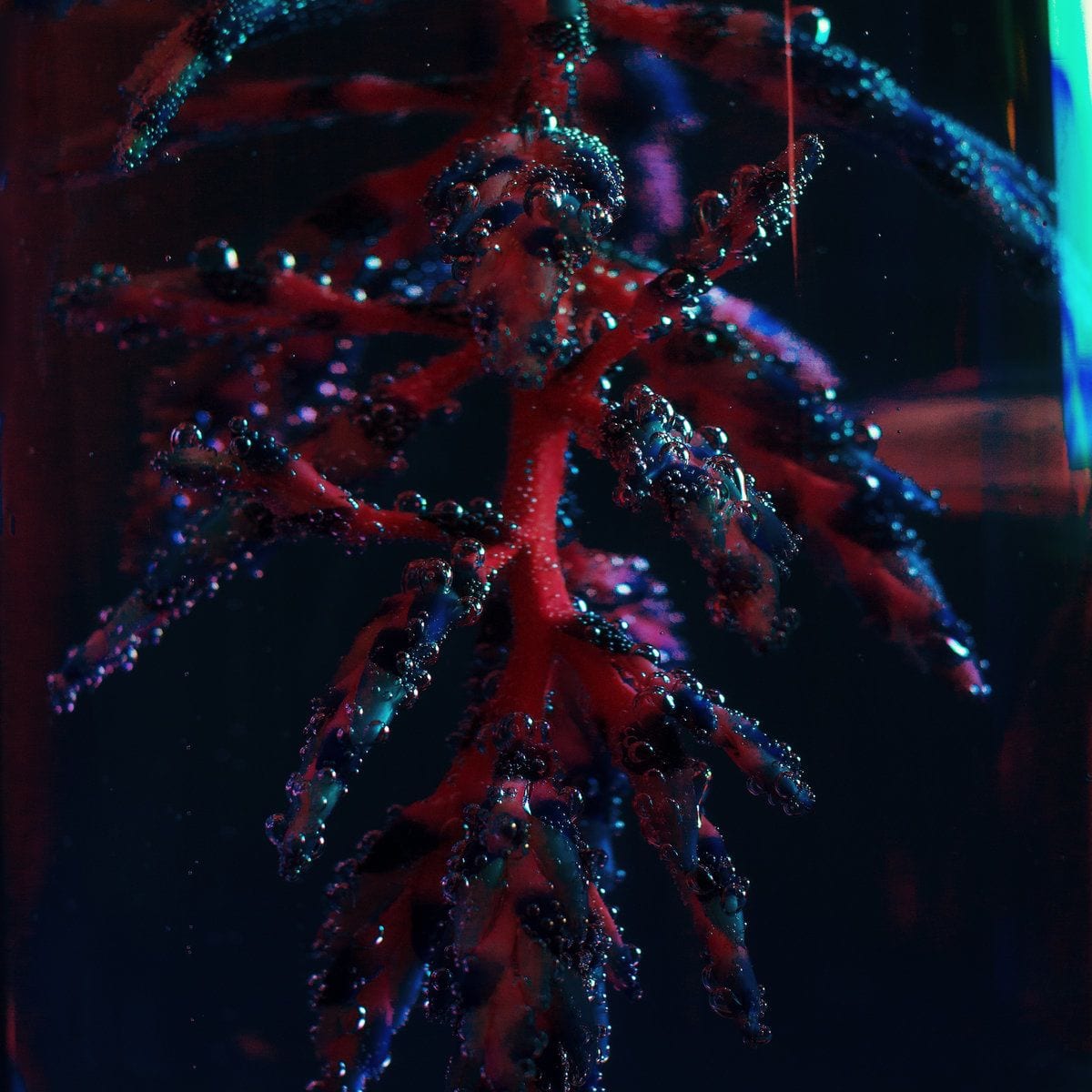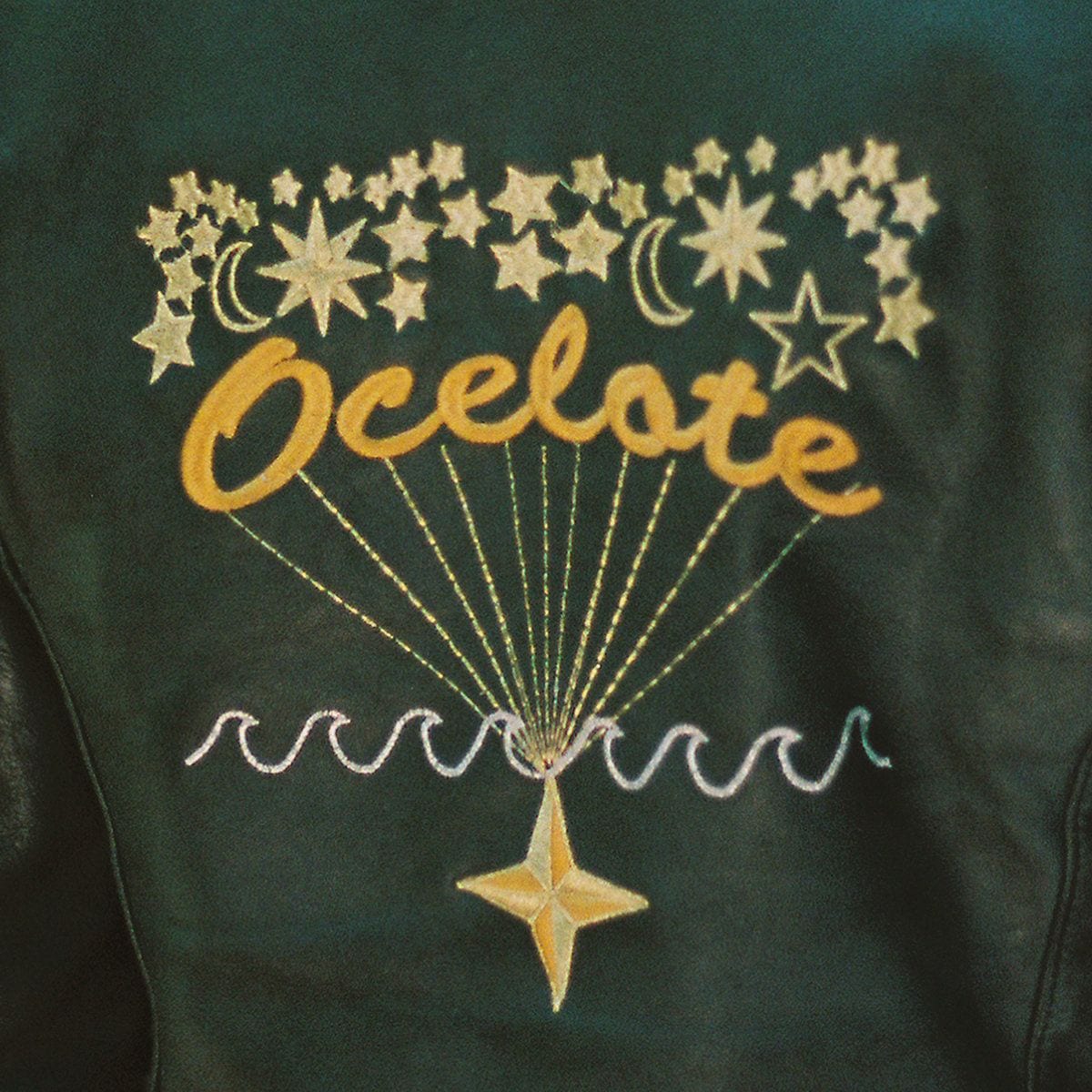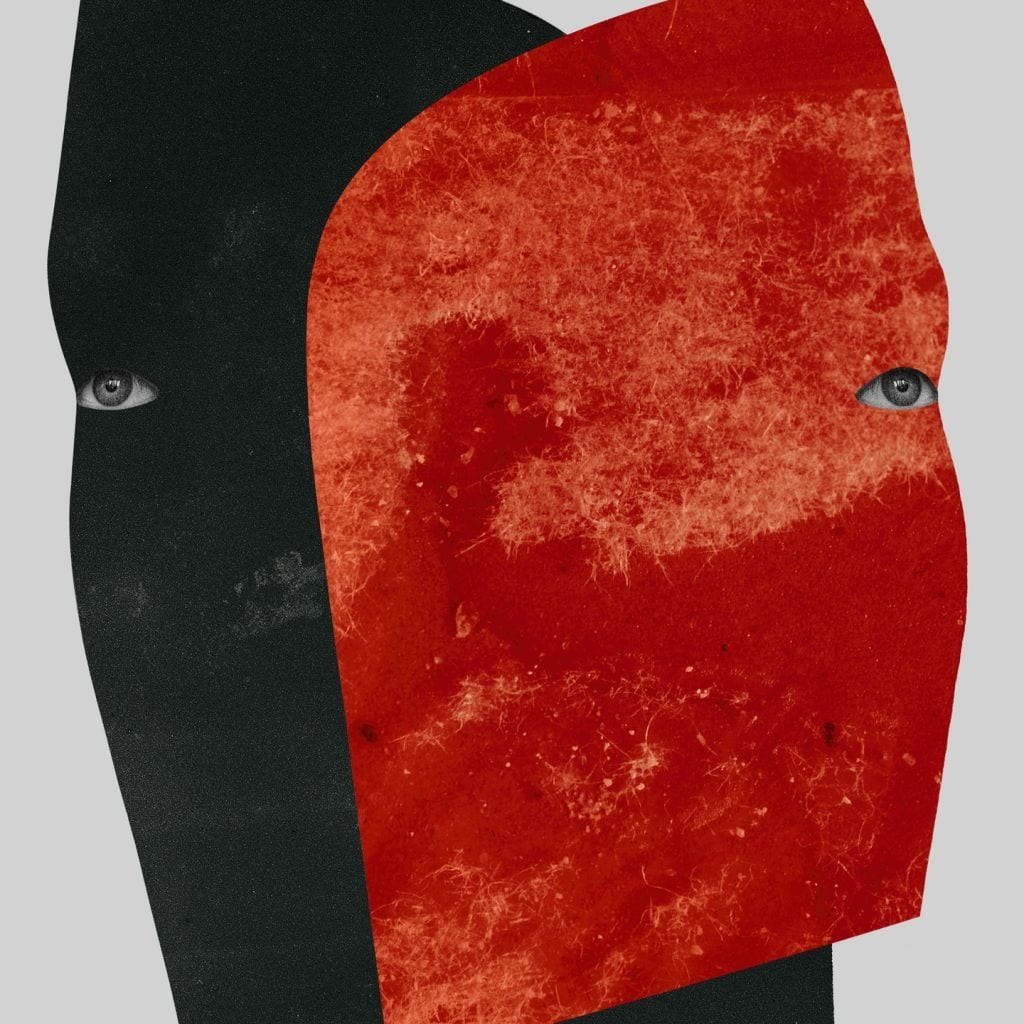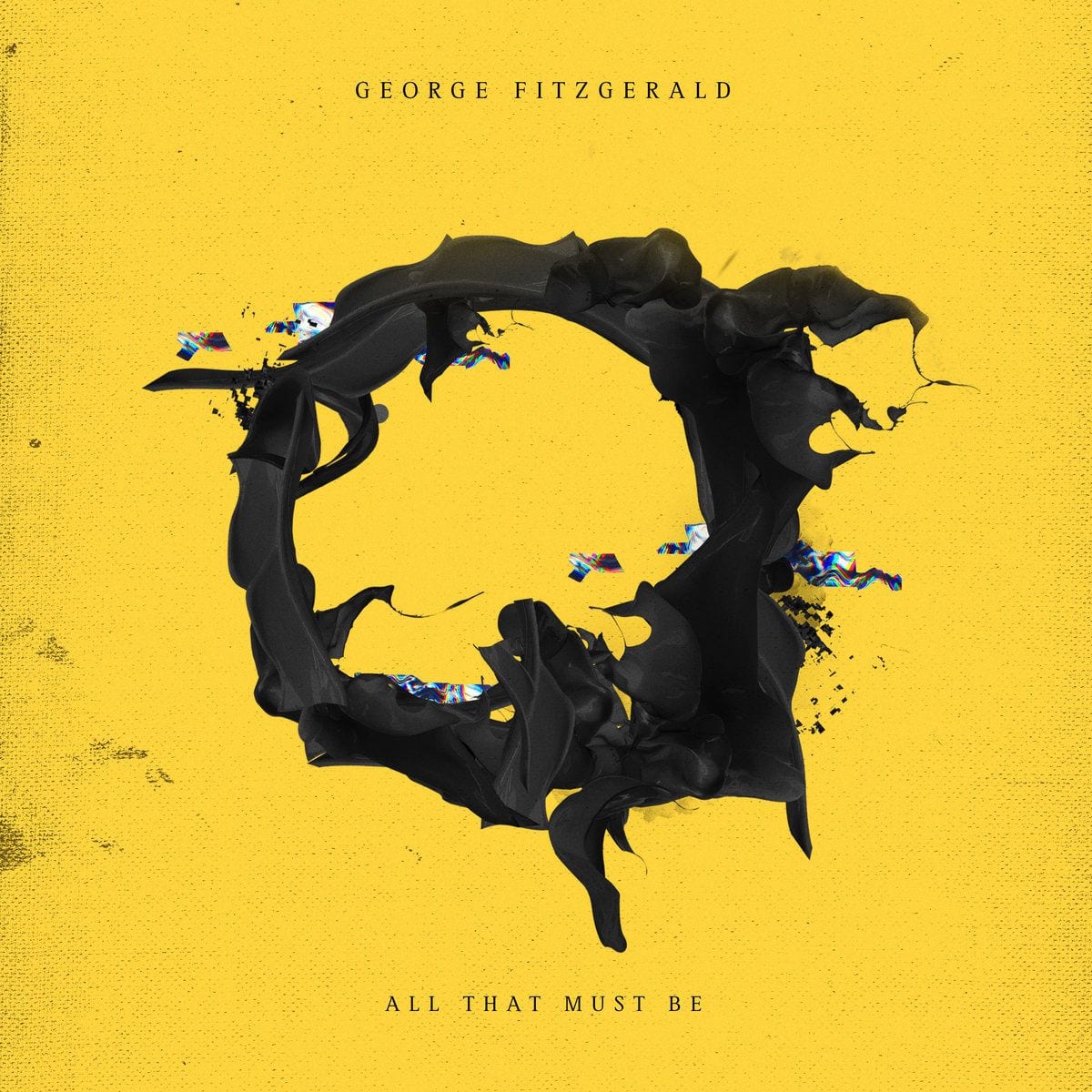25. Great Dane – Gamma Ray (ADBC)

Dane Morris is truly a great artist and he has proven so time and again over the course of his career. Gamma Ray was the bass worshipping Los Angeles beatsmith’s fourth full-length, and continued the naming scheme started on his 2013 debut Alpha Dog and its 2014 follow up Beta Cat. He went positively aquatic with this one, squirting out a bevy of murky downtempo beats that’ll have you floating eerily across the dance floor.
Given the aggressively humorous note the album start on, an Adult Swim-like sketch featuring a laser-touting feline, and the thuggish bass crushing that follows on “Sorry Steve”, the poignant soul-searching of “Fog & Fear” may come as a surprise, but Great Dane cannot be contained by a singular mode of expression. Influences from Jamaica, Japan, England, and beyond colour the sonic diversity of Gamma Ray. This thing is a trip in more ways than one. Drift away with it. – Alan Ranta
LISTEN: Bandcamp / Spotify / YouTube
+ + +
24. Daniel Avery – Song For Alpha (Mute/Phantasy)
On Song For Alpha British DJ and producer Daniel Avery stuck to the fundamental dictum that music should take you to somewhere unexpected – all whilst furthering his own unique, sonic identity. This singularity was apparent throughout the album as tracks adeptly swang from moments of serene contemplation to dynamic techno. While still a techno album at heart, Song For Alpha was a far starker affair than his brilliant debut Drone Logic. From the outset, there was a cohesiveness and depth to the tracks that were gradually revealed as Avery turned back a little more of its skin to see what lay beneath. Incorporating immersive ambient synths, slabs of white noise and tense, dark, droning sounds, Avery captured the unrelenting and captivating dualism between tranquility and chaos. The result was a sweeping, majestic album that sent the listener soaring above mountainous peaks or gently brushing the canyon floor, often during the space of a single track. Song For Alpha grasped the ebbs and flows of the dancefloor and understood that the best electronic music should transport you to places where the how’s and why’s are no longer important. – Paul Carr
LISTEN: Spotify | WATCH: “Projector” / “Slow Fade”
+ + +
23. Mefjus – Manifest (Vision Recordings)
Austrian producer Martin Schober’s second full-length album rode the cutting edge of contemporary drum and bass. His compositions on
Manifest are liquid smooth, technically sophisticated, industrial strength, ass shake-tastic slabs of hardcore hip-hop posturing twisted around mind-bending, tech-infused, horror sci-fi tune-smithing with all the warped basslines you can handle and surprising organic samples enriching its dank timbre pallet.
As a whole,
Manifest has such a compelling narrative flow, the listener is swept away by the undertow, so engrossed they may end up minutes later wondering where the hell in the track listing they are. This was arguably the single most impressive drum and bass album since Evol Intent dropped their debut, Era of Diversion, a whole decade ago. Fans of Noisia, Enei, and Phase need this in their collection. – Alan Ranta
LISTEN: Spotify / YouTube | WATCH: “Fractured” / “Together”
+ + +
22. Gas – Rausch (Kompakt)
Wolfgang Voigt continues to find ways to fundamentally reshape the same rich ambient spaces he’s always envisioned through his Gas project, and on Rausch — the follow-up to his 2017 comeback, the more luminous Narkopop — his aural landscapes dip into darker and more ominous realms. The atmospheric world of Rausch (technically a single longform piece) is undeniably slow to transform, but that glacial movement from wind-swept trees and the quiet pang of cymbals to near-subliminal industrial clatter and a steady four-on-the-floor beat is transcendental. Voigt again utilizes his signature foggy club backdrops, but here those elements feel murkier, weighed down with the sludge of reverb and throbbing sub bass. In its place, a general discord dominates the album, with mismatched organs, strings, and pads that loom over the expanse. So much of the classic Gas sound is situated in the margins, and while that’s certainly also true of Rausch, the dissonance is the prime, potent force at the forefront of the sound. As a result, Rausch is a more heady, overstated step for Voigt, but one that’s no less hypnotic, and perhaps even more visceral. – Colin Fitzgerald
LISTEN: Bandcamp / Spotify | WATCH: Trailer
+ + +
21. RP Boo – I’ll Tell You What! (Planet Mu)
RP Boo’s merciless third album, I’ll Tell You What!, is the sound of an apex predator staking out his hunting ground. It’s the kind of purist statement that only comes across once in a blue moon, an album that expands the scope of its genre—in this case, Chicago footwork—by looking inward rather than outward, stripping the genre to its constituent parts rather than bulking it up with outside influences. This is the footwork godfather’s first album of new material following two career-spanning compilations, but if it’s designed for home listening as much as dancing, it reminds us why the challenging genre proved so popular in the first place. At its best, it makes us feel as if we’re in the center of a maelstrom, walking on air. It’s explicitly badass music, and RP Boo presents himself as an old master at work: “watch and witness,” he gloats, before bringing those razor-sharp snares back in. – Daniel Bromfield
LISTEN: Bandcamp / Spotify / YouTube
+ + +
20. Tim Hecker – Konoyo (Kranky)
Many paths to experimentalism have an electronic music origin, and the work of Tim Hecker, as off-kilter as it always is, displays a kinship to leftfield and ambient deviations of electronic music. In his previous work Love Streams, Hecker reconfigured recorded vocals to act as different components of his extravagant progression, turning them to beats or bass lines. With Konoyo he uses the same strategy but on a gagaku ensemble, resulting in a fierce exercise in sound collage. By performing these alchemical machinations, Hecker is able to produce an ambient world filled with familiar pieces, a note here and percussive rhythm there, but when put together they create a complete novel result. It is a work that bridges the approach of Love Streams with the darker days of Ravedeath, 1972, and Virgins, which makes Konoyo the missing piece of Hecker’s discography, and one of his crowning achievements. – Spyros Stasis
LISTEN: Bandcamp / Spotify / YouTube | WATCH: “This Life”
+ + +
19. Inja – Blank Pages (Hospital)
Just when you thought there wouldn’t be any more great jungle albums, along came British MC and poet Gareth Hue (a.k.a Inja) with his deep lyric book and a coterie of broken beat bad boys to create Blank Pages. On his impressive debut album, Inja dropped future R&B and grime-tinged vocals over a bevy of half-step offerings so choice you’d think Roni Size & Reprazent just won the Mercury Prize. While the range of collaborating producers is vast and varied, counting Pete Cannon, Nu:Tone, Logistics, Serum, Whiney and Anile among their ranks, the sound is held down tight, working that classic mode of old school hardcore imbued with hip-hop hustle and neo-soul smoothness to utter perfection.
Yet, for how hard this record bangs and makes you want to pogo back in time, it’s actually quite grounded. Inja wasn’t afraid to go personal lyrically, shining a light in dark corners of modern society and speaking truth to power, while having his daughter Queen Zee master a portion of the album underscored the ultimate sense of familial love that permeates Blank Pages. It’s an album that pleases body and spirit. – Alan Ranta
LISTEN: Spotify / YouTube | WATCH: “War Games”
+ + +
18. Proc Fiskal – Insula (Hyperdub)
Edinburgh producer Joe Powers’ debut album Insula is a distilled and hazy, deconstructed and then reconstructed view of grime and UK dance music. An energized rehash of tired tropes filtered through the mind of someone who grew up with the rise of social media platforms and in a world riddled with attention deficit. Despite Insula‘s reliance on recognizable sounds and tropes, it never feels nostalgic as these elements are subverted and recontextualized. In its core, the album reads like an optimistic and genuinely fun affair, a cheeky commentary on society with a melancholy undertone that twinkles at hyperspeed, seemingly aimless, but with an overarching resolve.
Video game sound bites, laser sharp synthesizers, and sickeningly sweet concoctions of noises all coexist as they saturate the soundscape and float around a danceable base. The album is relentless in its attack, dense as individual sounds clash in a blazingly fast interplay, yet simultaneously light and enjoyable as a summer breeze. Because of this unlikely coexistence of elements, the record can function both as dancefloor fuel and a layered puzzle to be solved in solitude. While one of the title’s interpretations alludes to Powers’ own artistic isolation, the album feels quite the opposite—emphatically connected and visionary. – Antonio Poscic
LISTEN: Bandcamp / Spotify / YouTube | WATCH: “Dish Washing” / “Dopamine”
+ + +
17. Eartheater – IRISIRI (PAN)
The name of Alex Drewchin’s project could be “earth eater” or “ear theater,” and either is apt: IRISIRI is subterranean music with a theatrical sense of jollity. The former Guardian Alien member is a vocal contortionist, her voice skyrocketing into a keening upper range reminiscent of Henry Cow’s Dagmar Krause when she’s not rapping, screaming, doing bone-dry valley-girl impressions or stacking her voice into layers that’d make Julianna Barwick jealous. In keeping with electronic full-lengths’ recent trend towards holistic, filmic experiences, the short tracks here blur into one another, using start-stop tension to keep us on our toes. It’s almost like a beat tape, and though hip hop looms large there are also hints of the squishy, organic microhouse of Ricardo Villalobos. Add abstracted feminist sloganeering (“inhale baby pink/exhale red!”) and we have on our hands one of the best psychedelic protest albums of its time. – Daniel Bromfield
LISTEN: Bandcamp / Spotify / YouTube | WATCH: “Claustra” / “Inclined”
+ + +
16. Helena Hauff – Qualm (Ninja Tune)
Helena Hauff’s Qualm is a simple album, but not a shallow one. The bare-nosed functionalism of minimalist dance music has long been a preoccupation of indie electronic artists seeking a way back to exploratory artistry of the 1980s, but for many, nostalgia for the formative years of techno have left little room for modern iteration. Qualm exists in a limbo state between the utilitarian grooves of the past and their experimental evolution, a subtly dizzying record that neither breaks out of nor relies too heavily on its retro inspirations. Hauff crafts a raw, singular document of straight-to-tape, in-your-face electronic force when the prevailing sound of the day is passive soundscapes, and yet her music maintains its danceable pulse under the heavy weight of a distorted skeleton. She remains separate from the insular hivemind of modern electronic music trends, and yet Qualm is still a breeze to listen to, stimulating without being inaccessible, and familiar without being conventional. Ultimately, in its stark, propulsive, spontaneous energy, Qualm is raw techno at work. – Colin Fitzgerald
LISTEN: Bandcamp / Spotify / YouTube | WATCH: “Qualm: A Short Film”
+ + +
15. Okzharp and Manthe Ribane – Closer Apart (Hyperdub)
Closer Apart is all about dichotomies. Producer Okzharp masterminds a sparse structure of electronic beats, while performance artist and singer Manthe Ribane warms each track with smooth vocal melodies. The duo never stays still for long; low-lying “Why U in My Way” sits alongside the swagger of “Zagga”; existential “Tide” comes before the blissful affirmations of “Kubona”, which leads into the dance beats of “Theletsa”. No matter how sharp the contrasts in mood, though, the pair pulls every song into a harmonious whole, looking at the big picture and the present moment all at once – a brilliant show of perspective. On Closer Apart, the mechanical and the organic are not mutually exclusive. Rather, Okzharp and Ribane use them to create tension with spectacular sonic potential. The minimalist approach both artists take only heightens the clarity of their yin-and-yang dynamic. Innovative, unpredictable, and improbably cohesive, Closer Apart signals a wide-open future worth exploring. – Adriane Pontecorvo
LISTEN: Bandcamp / Spotify / YouTube | WATCH: “Closer/Apart” / “Kubona”
+ + +
14. Kelly Moran – Ultraviolet (Warp)
Kelly Moran is an extremely versatile artist, musician and composer, who has been combining many different genres to build her unique sound. Modern composition, neo-classical motifs and improv might be leading the way, but there is an underlying electronic music component that also defines the creative potential of Moran, and that is brilliantly exposed in her new work Ultraviolet. The use of synths and effects compliment the prepared piano, providing Ultraviolet with a richer background, filled with delicate textures and experimental notions. It is an exquisite combination of concepts and ideas, and that electronic injection that Moran introduces is able to provide the whole endeavor with both a unique ambiance, but also with a plethora of colors that enhance the modern composition aspect of the work. It is the origin of the spectrum of sounds displayed in Ultraviolet, and the pivotal quality that takes this work over the top. – Spyros Stasis
LISTEN: Spotify / YouTube | WATCH: “Helix (Edit)” / “In Parallel”
+ + +
13. Jon Hopkins – Singularity (Domino)
On his new album, acclaimed British producer Jon Hopkins set out to, as he put it, “follow the build, peak and release of a psychedelic experience.” In effect he was looking to create a piece of work that enabled the listener to reflect on their conscious and unconscious selves.
The result was Singularity, an intense, wholly immersive record that invited the listener to temporarily escape from the mundane and the repetitious and take a peek into their own subconscious. By weaving in a thematic consciousness throughout each song on Singularity Hopkins managed to intensify the listening experience to successfully evoke the euphoria and vivid awareness of a psychedelic experience. In order to achieve this, Hopkin’s split the album into two very distinctive halves. The first echoed a more physical journey to enlightenment with more urgent tracks such as “Singularity”, “Neon Pattern” and “Emerald Rush” exhibiting Hopkins’ recognizable mix of reverb heavy, throbbing beats and shuffling, fidgety synths. However, the second half saw the album mirroring a more spiritual transition. Gentle, ambient tracks like “Echo Dissolve” and “Recovery” guided the listener to an enlightened, spiritual end point on a nuanced, often breathtaking, sonic journey. – Paul Carr
LISTEN: Bandcamp / Spotify / YouTube | WATCH: “Singularity”
+ + +
12. Marie Davidson – Working Class Woman (Ninja Tune)
Marie Davidson’s career has been flawless. Whether solo or with Pierre Guerineau in Essaie Pas, the Montreal-based producer and musician keeps releasing music that, at first glance, is dominated by an otherworldly sense of cool. Davidson wraps her alluring baseline of minimal techno into shrouds of darkwave and splinters of club music infected with a constant sense of spleen. But while her work with Essaie Pas might project an aura of anachronistic insularity—a sense of mysterious, noir removal from our time—as a solo artists she offers keen and brutal criticism of the world of electronic music and clubbing. And on Working Class Woman she’s more vulnerable, empowered, and sharper than ever.
Working Class Woman is an unequivocally feminist record which puts sexism and misogyny at the center of Davidson’s crosshairs. Her quips, delivered in deadpan spoken text, are simultaneously endlessly funny and painful. “I’m sorry I missed your set, I heard it was amazing / (I think she’s sobered up, I heard she sucks in bed),” she reimagines dialogues with “fans” and overheard conversations. Davidson draws from her internal and external experiences as she narrates, with a personal, caricatured voice, the struggles of women in a male dominated world. Her music—an alloy of sparse techno, electro, disco, and industrial—feels both claustrophobic and expansive, diverse and direct, but always adaptive to the themes it supports. Despite all the irony and cynicism, Davidson ends the album with the bareness of “La Chambre intérieure”, a bleak vision of Québec and a meditation on love. It’s a genuine, emotional, and bitter ending to an important album. – Antonio Poscic
LISTEN: Bandcamp / Spotify / YouTube
+ + +
11. Objekt – Cocoon Crush (PAN)
If anyone wants to experience what musical evolution is, they can simply take a look at what TJ Hertz has done with Objekt. The techno producer unleashed an exquisite debut record, Flatland, back in 2014 showcasing his unique perspective when it comes to techno. Fusing IDM and industrial elements Objekt’s debut record felt like a breath of fresh air for the genre, managing to stay within the confinements of the style but still push boundaries. Cocoon Crush, Objekt’s sophomore full-length, completely unravels the foundations of the work presented in Flatland. While the notions of IDM and techno are still at the center of Hertz’s new work, the approach that he takes presents a deconstructed scope of the genre. Industrial motifs, noise and sound design become prominent elements, while the progression of the record deviates from the monotonous techno approach and revels in this improvised manifestation.As interesting and enticing Flatland was, this evolutionary leap sees Objekt operate in a completely different level. – Spyros Stasis
LISTEN: Bandcamp / Spotify / YouTube
+ + +
10. DJ Koze – Knock Knock (Pampa)
DJ Koze’s Knock Knock is a house “artist album” with the same skyward gaze and longing for transcendence as Sgt. Pepper or Pet Sounds, painted in psychedelic colors by no less deft a hand. The German producer trades in improbable emotional extremes, his hiccupping samples perpetually ready to burst into tears as strings swell behind them. On Knock Knock this tear-jerking grandeur is employed in the service of building massive platforms for the guests Koze now has the clout to call at will: indie stalwarts like Kurt Wagner and José Gonzalez, divas like Roisín Murphy, his own stable of Pampa weed-carriers. Compared to its predecessor from 2013, the astounding Amygdala, Knock Knock is a little more mercenary, more of a work of craftsmanship by a rising indie star. And at 78 minutes it can be a bit exhausting to take in one go, but there’s so much great stuff here you might have a new favorite song every day. – Daniel Bromfield
LISTEN: Spotify / YouTube | WATCH: “Pick Up”
+ + +
9. Maribou State – Kingdoms in Colour (Counter)
We are living In a period of history characterized by self-imposed isolation and willful insularity. At a time when governments are going to great lengths to demarcate their territory and reinforce their boundaries, British electronic band Maribou State produced an album that did quite the opposite. Taking inspiration from the music scenes and heritage of the places they had toured whilst promoting previous album, Portraits, Kingdoms of Colour is an album without borders. An album that straddles the globe from Delhi through to Libson, and pays little attention to where one genre starts and another ends.
From the Indian melodies, the Krautrock percussion to sweeping oriental strings, each song feels like embarking on a whistle stop world tour. Throughout the album, Maribou State skillfully layer a bold, prismatic fusion of styles that takes the listener on a beguiling musical journey. It is a daring, fascinating album that beautifully balances the organic and synthetic as the pair weave in live instruments with artfully chosen samples. By embracing a more expansive approach the band have created a beautifully heterogeneous album that illustrates what can be achieved by focusing one’s gaze outwards and embracing diversity. – Paul Carr
LISTEN: Bandcamp / Spotify / YouTube | WATCH: “Nervous Tics”
+ + +
8. Ital Tek – Bodied (Planet Mu)
It might seem crazy now but before Ital Tek’s 2016 masterpiece Hollowed was released, few, including its author, thought it was going to be a success. The subsequent critical adulation that followed may have taken him by surprise but it also afforded him the freedom to explore more deeply the cinematic, immersive soundscapes that he had created on Hollowed. Written in quick bursts while working on other projects, the music on Bodied was closer to avant-garde, classical music than anything remotely approaching traditional electronic music. Ital Tek took the physicality and geometry of his sound and created complex, atmospheric, otherworldly soundscapes that felt as if they are actively eschewing any common physical rules. Each song felt like an attempt to extricate himself from the limitations of time and place, creating atemporal, amorphous tracks that exist somewhere wholly new. The indeterminate nature of the music he created, added to the general sense of wonder. Sounds seem to drift in a non-definable void yet are so vividly and meticulously constructed to leave an album of breathtaking scope and vision. – Paul Carr
LISTEN: Bandcamp / Spotify / YouTube | WATCH: “Blood Rain”
+ + +
7. Lotic – Power (Tri Angle)
Electronic music, like hip-hop, is at its very core concerned with the operations of power. House and techno music were born out of struggle, from urban communities of LGBTQ people of color in need of spaces of salvation in which they could productively channel the frustration of surviving in an oppressive society. Lotic’s Power is unsurprisingly about conflict, specifically from the perspective of the disempowered; songs with titles like “Resilience” and “Fragility” wordlessly tap into the emotional weight of existential strife at the heart of a hateful society, while the assertive industrialized grooves of “Distribution of Care” and “Bulletproof” serve as acts of cultural resistance. It’s “Hunted’s” whispered mantra, though — “Brown skin, masculine frame / Head’s a target / Acting real feminine / Make ’em vomit” — that fully demonstrates the provocative, liberating virtue of an album like Power as it brandishes authority and tenacity against systems of privilege. Lotic’s message is one of empathy and empowerment, and through its gritty, melancholy canals, Power fulfills the mission of its forebears. – Colin Fitzgerald
LISTEN: Bandcamp / Spotify / YouTube | WATCH: “Hunted”
+ + +
6. Amnesia Scanner – Another Life (PAN)
If Amnesia Scanner’s 2015 EP AS was an ellipsis, a way for the Berlin-based Finnish duo of Ville Haimala and Martti Kalliala to rather boldly announce their futuristic take on experimental EDM with a taste for entropy, Another Life is a furious exclamation mark. Tentatively living in the world of club music, they toy with the genre’s elements, splicing them with their own mutant DNA. Rhythms clatter unpredictably and disjointedly just before hitting a sensuous groove, electronic effects appear jangly and abrasive as they fuse into melodies, and a general sense of suffocating tension is suddenly released in waves of stroboscopic climaxes and ambient passages.
True to its name, Another Life exists in a synthetic, cyberpunk replica of reality shifted ever so slightly out of phase. As human, post-human, and utterly inhuman vocals mesh, deceptively familiar but really alien and transmogrified sounds demand attention while they disappear out of reach and corrupt any points of reference. An anxious reflection on the pre-apocalyptic world of today or a vision of a future dystopian singularity? Another Life is both. – Antonio Poscic
LISTEN: Bandcamp / Spotify / YouTube | WATCH: “AS A.W.O.L.” / “AS Too Wrong”
+ + +
5. Vessel – Queen of Golden Dogs (Tri Angle)
Sebastian Gainsborough, the artist behind Vessel, has produced excellent works of forward thinking electronic music with his first two records, Order of Noise and Punish, Honey. In these early works, Vessel presented a disfigured vision of electronic music, relying on the harsher elements of noise and industrial genres to create a bombastic progression. At the same time, the influence of an atmospheric perspective was predominant in the works, as well as an ethos towards a leftfield approach to production. Queen of Golden Dogs however, sees this approach bloom into something completely different with Gainsborough injecting a neo-classical and modern composition approach on his electronic backbone.
These new elements present a completely different side of Vessel, this time with some fantastic vocal deliveries being at the record’s centre, allowing a more emotive quality to sprout forth. Yet, Vessel still brings the whole endeavor back to its point of origin unleashing some extravagant beats and progressions, collapsing the neo-classical motifs of the work. It is Gainsborough’s ability to move forward and experiment with a plethora of new ideas and concepts that makes Queen of Golden Dogs such an enticing listen. – Spyros Stasis
LISTEN: Bandcamp / Spotify / YouTube | WATCH: “Paplu (Love That Moves the Sun)”
+ + +
4. Elysia Crampton – Elysia Crampton (Break World)
Behind the deep conceptual face of Elysia Crampton’s 2018 self-titled album is a developing network of competing influences, esoteric sampled matter, and musical directions, all erupting out of a brilliant, conflicted center. Opener “Nativity” kicks in hard, with trap snares, footwork kicks, a steady guitar line, and a chain of abstract sound effects orbiting around each other in a polyrhythmic bacchanalia of mixed time signatures and disparate sound sources. The album continues that way for only five more tracks, but it feels endless. Even in a dense sonic environment, Crampton authors unique moods and styles for each song: “Solilunita” is edgy and empowering, “Oscollo” is lush and poignant, “Pachuyma” is all anxiety, “Orion Song” opens up to celestial dread, and “Moscow (Mariposa Voladora)” offers an apocalyptic end. The ultimate result is an album that sounds like nothing else but feels exactly like this global moment, an album that’s personal on an emotional level but universal on the conceptual level, a polyphonic, oracular masterpiece that is simultaneously about and a product of our modern chaos. – Colin Fitzgerald
LISTEN: Bandcamp / Spotify | WATCH: “Oscollo”
+ + +
3. Rival Consoles – Persona (Erased Tapes)
Few albums immerse you so quickly and completely into a fully-formed sonic world but that is exactly what Ryan Lee West (aka Rival Consoles) has done with his extraordinary Persona album. From the smooth, alien terrain of “Untravel” to the kaleidoscopic landscapes of “I Think So” to the claustrophobic sunless skies of “Phantom Grip”, this is an album that straddles light and dark, tranquility and chaos, fixed and broken all framed around a singular concept; the exploration of one’s persona. Taking inspiration from the Ingmar Bergman film of the same name, West has created a complex sonic tapestry from a mix of analog synths, warped acoustic instruments, and typically inventive use of effects pedals.
At times wildly kinetic and at others purposely languid it’s an ever-changing, constantly evolving album that invites the listener to question the very idea of themselves that they present to the world. It’s that beguiling mix of transportive electronic soundscapes and invitation for self-analysis that makes this album one of the most soul-stirring and evocative albums of the year. – Paul Carr
LISTEN: Bandcamp / Spotify | WATCH: “Hidden” / “Untravel”
+ + +
2. Yves Tumor – Safe in the Hands of Love (Warp)
Compared to Sean Bowie’s earlier eclectic and often convoluted albums under the Yves Tumor and Teams monikers, Safe in the Hands of Love is strikingly direct and accessible. His raw experimentalism, textural explorations, and power electronics are pushed to the background as pop sensibilities and a simple yet beautiful songcraft take over. But it is exactly this marriage of unabashed experimentalism and mainstream mannerism that exposes the real brilliance and unbridled creative power of Bowie’s vision. Safe in the Hands of Love is a culmination of his exploratory work, a hypermedial concoction liberated from preconceptions of form and genre that encompasses numberless styles—from deconstructed R&B, soul, vaporwave, synthpop, to rock—and sublimes them into a vivid mosaic of contemporary, internet-centric society.
Songs dance with their anachronistic, idiosyncratic, and bleeding-edge elements, structurally clean but texturally expansive and laced with influences. That is why a cut like “Noid”, which fuses breakbeat pop with alternative rock, can exist on the same level as the labyrinthine, noisy dark ambient of “Hope In Suffering (Escaping Oblivion & Overcoming Powerlessness)”. Dazzling, emotionally impactful, and genuine in its delivery, Safe in the Hands of Love exists as the world exists today, multifaceted and ambiguous. – Antonio Poscic
LISTEN: Spotify | WATCH: “Licking an Orchid”
+ + +
1. George FitzGerald – All That Must Be (Double Six/Domino)
In essence All That Must Be is about acceptance. Acceptance that life can be confusing and unpredictable. That the tangible and familiar can quickly be disrupted by seismic life changes. On his follow up to his debut Fading Love, FitzGerald gradually comes to terms with life’s uncertainties, on an often explicitly personal album that strikes the perfect balance between poignancy and escape. All That Must Be is his most cohesive work yet, retaining an organic and human feeling on with songs that are shot through with more realized pop melodies.
On slowly unfurling opener, “Two Moons Under”, FitzGerald fashions a punchy, danceable rhythm from layers of sliced and diced looped vocals while on “Burns”, he assembles ripples of airy vocal tracks that take on a meditative, almost spiritual air. The achingly soulful “Roll Back” sees FitzGerald and Lil Silva create something almost transcendentally brilliant, painting sadness with the subtlest of strokes. The carefully judged balance between urgency and tension on the brilliant “Siren Calls” embodies the overriding theme of the album, that remembering yet resisting the constant draw of the past.
All That Must Be is a musically rich, expertly layered album that sees FitzGerald gradually resisting the urge to retreat and instead embracing the new challenges, sensations and experiences ahead of him. – Paul Carr
LISTEN: Bandcamp / Spotify / YouTube | WATCH: “Roll Back”
READ: Exclusive track-by-track comments from George FitzGerald
+ + +
- The Best Electronic Music of 2012 - PopMatters
- The Best Electronic Music of 2015 - PopMatters
- The Best Electronic Music of 2014 - PopMatters
- The Best Electronic(a) Albums of 2008 - PopMatters
- The Best Electronic Music of 2013 - PopMatters
- The Best Electronic Music of 2009
- The 20 Best Electronic Albums of 2016
- The 20 Best Electronic Albums of 2017 - PopMatters
- Daniel Avery: Love + Light | Music Review - PopMatters
- The 20 Best Electronic Albums of 2015 - PopMatters
- The 10 Best Electropop Albums of 2019 - PopMatters
- The 20 Best Electronic Albums of 2020 - PopMatters



